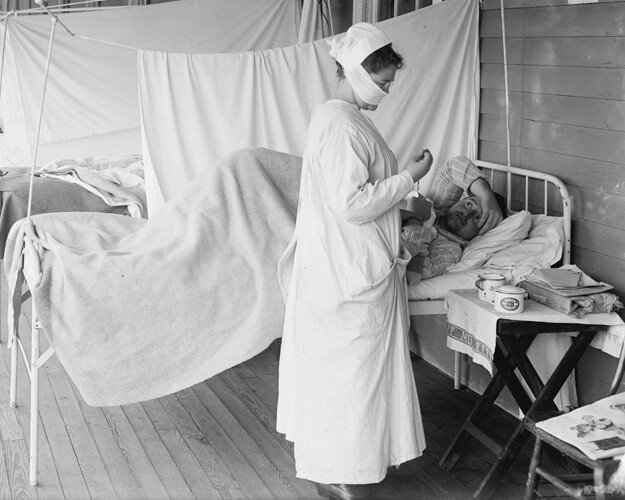Have you ever wondered how the 1918 pandemic affected families? Who exactly were the victims, and how did their families cope? With a little help from the BYU Record Linking Lab, you can now find out! Discover who the victims were, where they came from, and who their families were, using the lab’s interactive map called “Families of the 1918 Pandemic.”
This map allows you to explore different areas of the United States to learn more about victims and their families. You may even be able to find information about your relatives who were impacted.
NOTE: While not all states are currently accessible, records are still being added. The map is live, so check back to look into more states as their records become available.

How Did the 1918 Pandemic Impact People?
The 1918 pandemic, also known as the Spanish flu pandemic, was the last major pandemic prior to the arrival of COVID-19. It had a drastic impact on individuals, families, and countries around the globe, with an estimated 50 million deaths. Young adults were hit especially hard, an oddity in the world of diseases.
Learn more about 1918 pandemic—where the Spanish flu came from, how it spread, how long it lasted, who it impacted, and how it compares with COVID-19.
The 1918 Pandemic
What Is the BYU Record Linking Lab?
The BYU Record Linking Lab is a group of academics, undergraduate research assistants, and volunteers at Brigham Young University in Provo, Utah. Together, they look for ways to enhance the experience of the FamilySearch Family Tree. With over 40 research assistants—all with unique areas of expertise, such as programming, family history, and foreign languages—the group can tackle problems from different angles.
The end result? The group that runs the BYU Linking Lab is creating tools that consider the importance of accuracy in family history and implement the speed and ease of technology.
Currently, the BYU Linking Lab is developing autoindexing tools, linking families that may be difficult to find and creating a census tree that will drastically improve family connections into the 1900s. They’re also working on several other projects with academic partners.

How Does the Map Work?
The “Families of the 1918 Pandemic” map is one of the largest resources for finding the families of the 1918 pandemic victims. It accomplishes this by linking the records of pandemic deaths with profiles on the FamilySearch Family Tree.
FamilySearch’s Family Tree is a shared global tree that aims to connect everyone around the world. People worldwide work together on the same tree to connect living and deceased family members alike. While the work is ongoing, each person in the tree ideally has a single profile that’s linked to members of his or her family.
As a result, when the 1918 pandemic map links to a person profile for each victim, viewers will be able to see the person’s family connections. They’ll also be able to see any records, family memories, or photos linked to the victim and the victim’s family members.
How Do I Find My Family?
The “Families of the 1918 Pandemic” map allows you to see the impact of the 1918 pandemic on individuals and families. But what makes it even better? If you’re connected to the Family Tree, you may be able to find your own family members using the map.
If you’re not connected to the Family Tree yet, don’t worry. It’s not difficult to get started. Start here with a guide to getting started and understanding the Family Tree.


